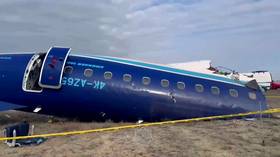Precious Apollo mission audio salvaged from analog scrap heap

Nearly 3,000 hours of historic NASA mission recordings are being saved from obscurity by a team of researchers who have developed a system for transcribing old audio from analog tapes.
Conversations between astronauts, NASA mission control, and support technicians were recorded as part of the Apollo Program missions, which ran between 1963 and 1972.
While much of the recordings - including Neil Armstrong’s famous first steps on the moon in 1969 - have already been released for public consumption, thousands of hours remained in storage and undigitized.
READ MORE: Moon landing PHOTOS reignite conspiracy theories… again
Enter experts from the University of Texas at Dallas, who have now launched the website Explore Apollo, an archive of reclaimed NASA mission audio.
The tranche of recordings saved from obsolete equipment includes audio for Apollo 11, Apollo 13, Apollo 1, and Gemini 8 missions. Some clips contain mission moments that are perhaps less headline grabbing but equally as intriguing, such as the beginning of lunar landing sequences.
Details of the restoration project have been published in the IEEE Xplore digital library. One section of audio from the Apollo 11 mission depicts the moment NASA technicians guided astronauts Neil Armstrong, Buzz Aldrin, and Michael Collins to the surface of the moon.
Restoring the audio was no mean feat, according to the researchers behind the project. Working out of the university’s Center for Robust Speech Systems (CRSS), they had to first design a new disk drive in which to play the 1960-era NASA reels.
READ MORE: Huge moon cave could be suitable for astronauts’ base – Japanese space agency
According to CRSS founder Dr. John Hansen, without the intervention it would have taken approximately 170 years to digitize the audio since the old tapes could only play one track at a time.
“We couldn’t use that [old] system, so we had to design a new one. We designed our own 30-track read head, and built a parallel solution to capture all 30 tracks at one time. This is the only solution that exists on the planet,” Hansen said.
The team also had to develop their own algorithm that could isolate speakers from the background noise typically heard during tense space missions.














